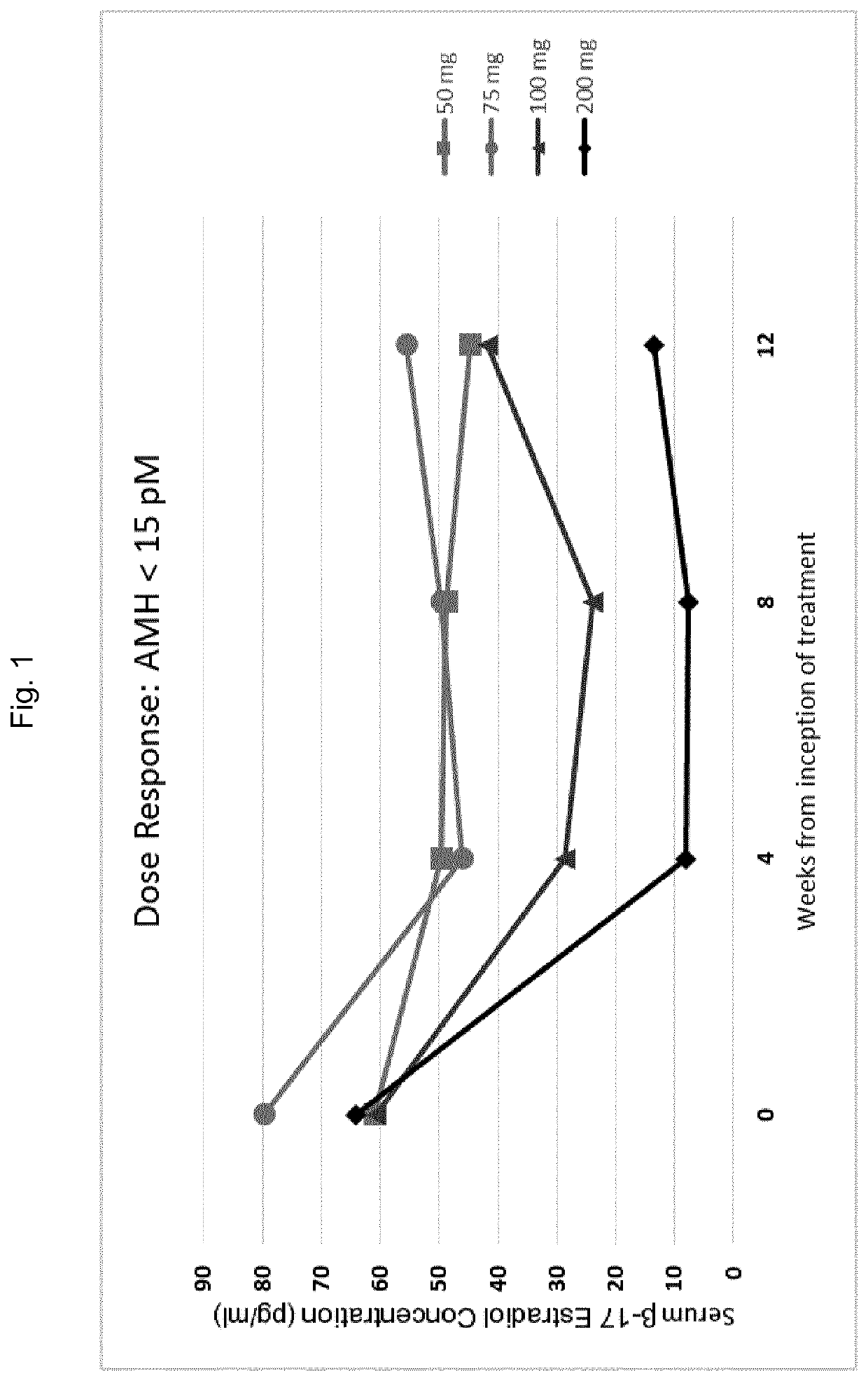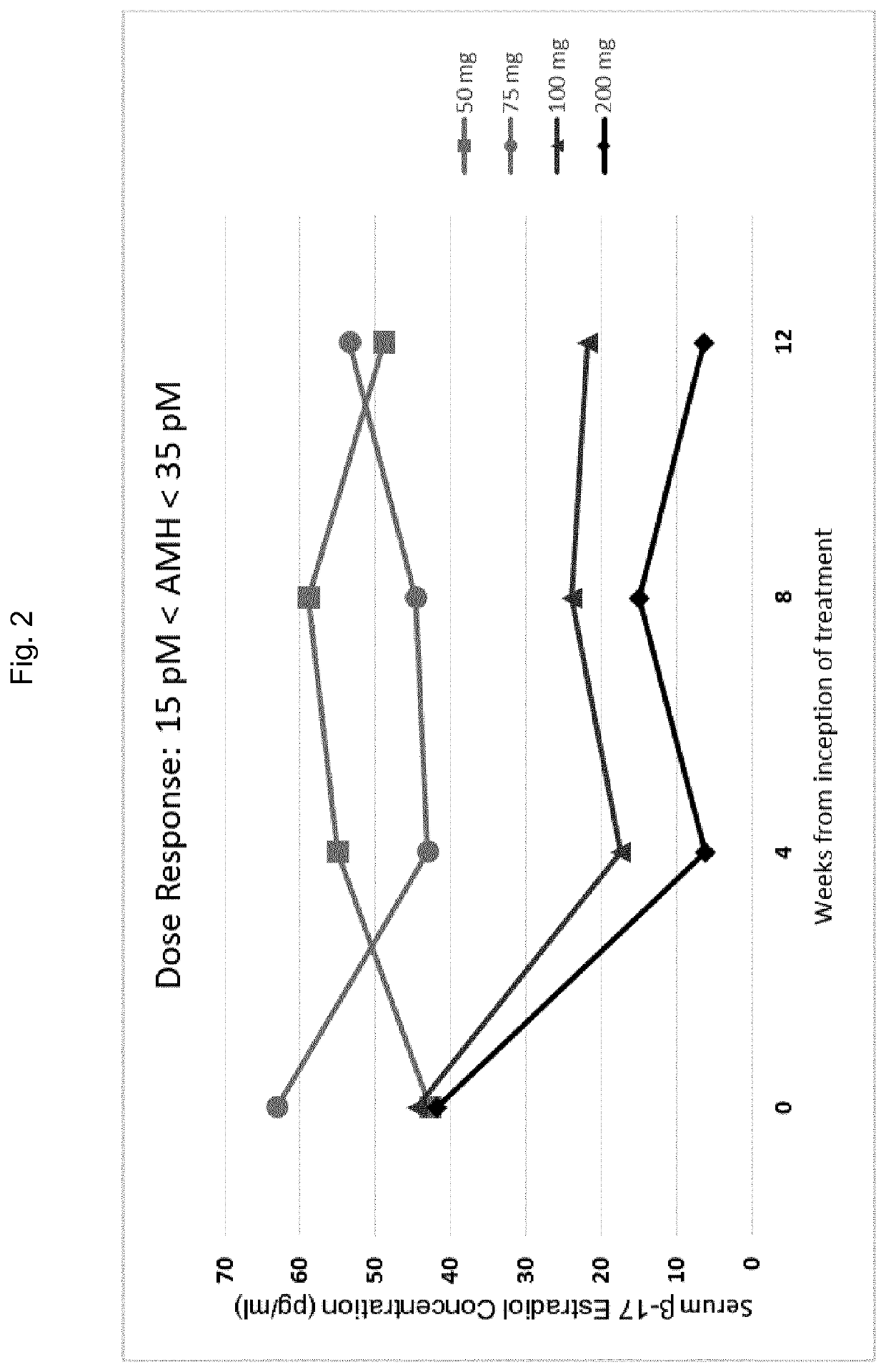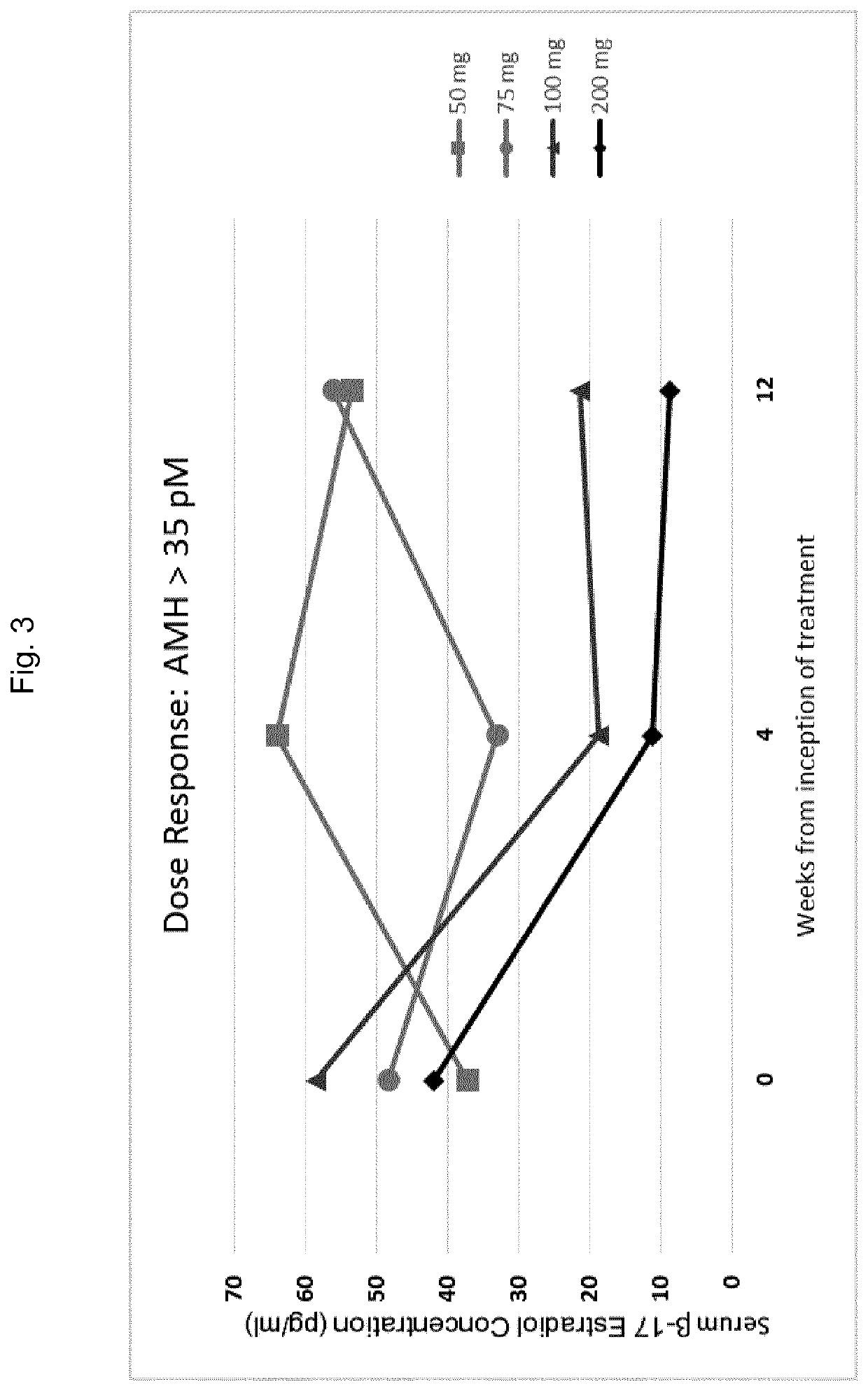Gonadotropin-releasing hormone antagonist dosing regimens for the treatment of endometriosis
a technology of endometriosis and hormone release, which is applied in the direction of drug composition, peptide/protein ingredients, sexual disorders, etc., can solve the problems of endometriosis atrophy, second-line therapy, and women taking cocs no longer experiencing adequate pain reli
- Summary
- Abstract
- Description
- Claims
- Application Information
AI Technical Summary
Benefits of technology
Problems solved by technology
Method used
Image
Examples
example 1
ng an Initial Dosage of a GnRH Antagonist for the Treatment of Endometriosis in a Human Subject Based on AMH Level
[0512]Using the methods of the invention, a physician of skill in the art may assess a patient's AMH level prior to the initiation of GnRH antagonist therapy for the treatment of endometriosis. The GnRH antagonist to be administered to the patient may be a compound represented by formula (III), choline 3-[2-fluoro-5-(2,3-difluoro-6-methoxybenzyloxy)4-methoxyphenyl]-2,4-dioxo-1,2,3,4-tetrahydrothieno[3,4d]pyrimidine-5-carboxylate. A physician of skill in the art may withdraw blood from the patient and may subsequently perform or more analytical techniques, such as an immunoassay known in the art or described herein, in order to quantify the concentration of AMH in the blood sample isolated from the patient. If a determination is made that the concentration of AMH in the sample is elevated with respect to an AMH reference range of from 15 to 35 pM, the physician may determ...
example 2
gonist Dose Titration for the Treatment of Endometriosis in a Human Subject Based on E2 Level
[0516]Using the methods of the invention, a physician of skill in the art may assess the level of E2 in a patient that is currently undergoing GnRH antagonist therapy for the treatment of endometriosis in order to determine whether the patient should continue to be administered the same dosage of the GnRH antagonist or if the patient should be administered a different dosage of the GnRH antagonist in order to effectively alleviate one or more symptoms of endometriosis. The GnRH antagonist to be administered to the patient may be a compound represented by formula (III), choline 3-[2-fluoro-5-(2,3-difluoro-6-methoxybenzyloxy)4-methoxyphenyl]-2,4-dioxo-1,2,3,4-tetrahydrothieno[3,4d]pyrimidine-5-carboxylate. A physician of skill in the art may withdraw blood from the patient and may subsequently perform or more analytical techniques, such as an immunoassay known in the art or described herein, i...
example 3
ation of a GnRH Antagonist to Endometriosis Patients Presenting with Distinct AMH Levels
[0520]In order to investigate the effects of GnRH antagonists, such as compound (I), (II), and pharmaceutically acceptable salts thereof, such as the choline salt thereof (compound (Ill)), on endometriosis patients presenting with distinct initial values of serum AMH, a series of experiments was conducted in which patients were divided into multiple treatment arms and orally administered either compound (Ill) or a placebo. Specifically, a series of n=327 human female patients having endometriosis were divided into five groups, and received either placebo, 50 mg / day of compound (III), 75 mg / day of compound (III), 100 mg / day of compound (Ill), or 200 mg / day of compound (Ill) by oral delivery. Treatment with the placebo or compound (Ill) at the doses specified above occurred continuously over a period of 12 weeks.
[0521]At various time points throughout these experiments, patients were evaluated for ...
PUM
| Property | Measurement | Unit |
|---|---|---|
| Fraction | aaaaa | aaaaa |
| Fraction | aaaaa | aaaaa |
| Fraction | aaaaa | aaaaa |
Abstract
Description
Claims
Application Information
 Login to View More
Login to View More - R&D
- Intellectual Property
- Life Sciences
- Materials
- Tech Scout
- Unparalleled Data Quality
- Higher Quality Content
- 60% Fewer Hallucinations
Browse by: Latest US Patents, China's latest patents, Technical Efficacy Thesaurus, Application Domain, Technology Topic, Popular Technical Reports.
© 2025 PatSnap. All rights reserved.Legal|Privacy policy|Modern Slavery Act Transparency Statement|Sitemap|About US| Contact US: help@patsnap.com



